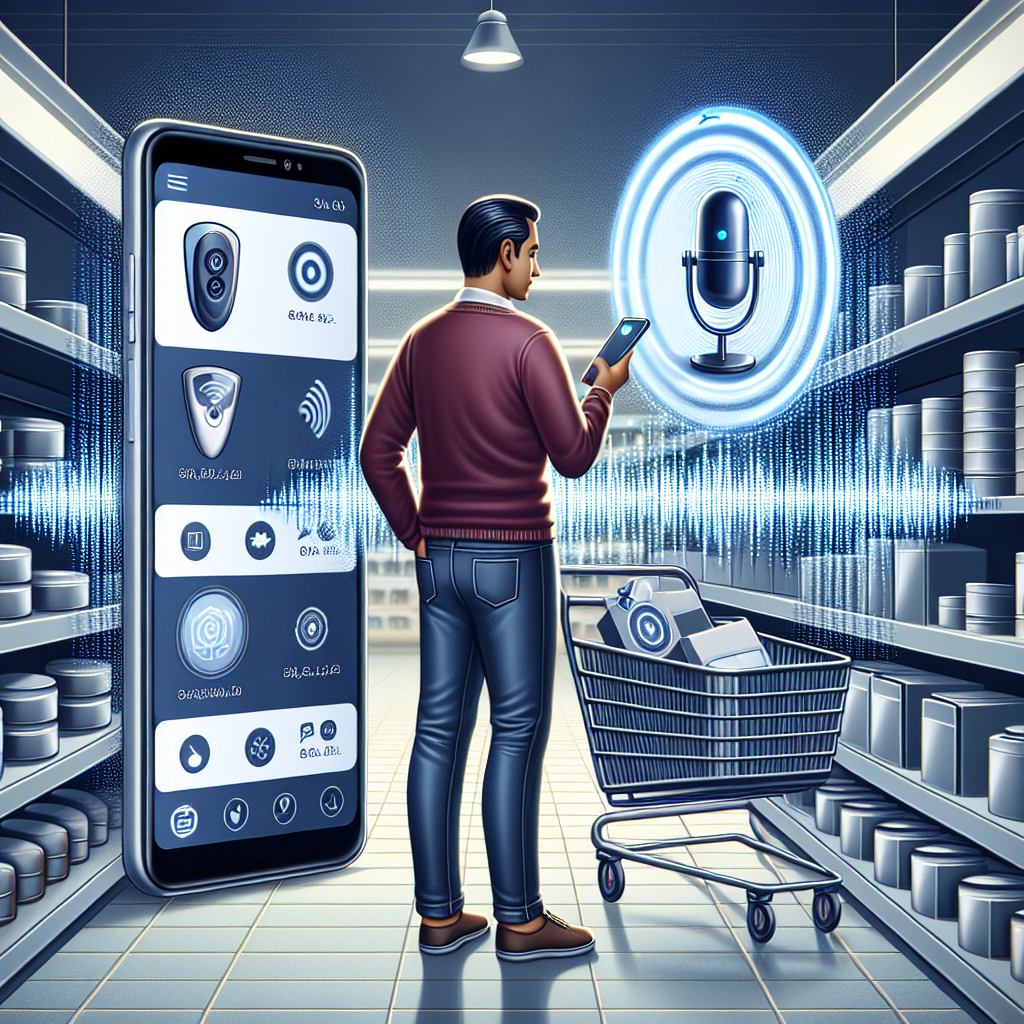
In numerous industries today, voice-activated technology is enhancing business operations. But nowhere does this cutting-edge tool find a more fitting application than in the world of sales. This technology, specifically in phone-based sales, is transforming the sales landscape, empowering businesses to offer personalized customer experiences, streamline operations, and ultimately, drive sales higher. It’s astounding how a simple command — a voice command — can mean the difference between a prospect and a close.

So how does voice-activated technology work? Broadly speaking, it utilizes artificial intelligence (AI) and machine learning algorithms to translate voice data into actionable commands. This technology operates in real-time, delivering immediate responses to queries and facilitating seamless interaction between users and electronic devices.
In the realm of phone-based sales, voice-activated product comparisons provide businesses with a unique, competitive advantage. They offer a hands-free solution that simplifies product comparisons for customers, enriching their shopping experiences. Imagine customers effortlessly comparing dozens of products by simply voicing their preferences! In a crowded marketplace, this feature alone can tip the scales in your favor. Forbes affirms that voice-assistance is now shaping the future of customer service.
Undeniably, adopting voice-activated technology in phone-based sales is the way forward. Its relevance in today’s market cannot be overstated. With today’s tech-savvy customers expecting swift and fluent services, voice-activated product comparisons cater perfectly to these escalating demands, ensuring businesses stay on top of their game.
In today's competitive marketplace, voice-activated product comparisons have emerged as a game-changing strategy for enhancing
customer interactions. This innovative approach allows businesses to offer swift, accurate responses, maintaining a natural conversational tone that mimics human interaction.
One of the primary benefits of voice-activated systems is their ability to provide instant information. Customers no longer have to wait for a sales representative to manually search and compare various products. A voice-activated system accomplishes this task in seconds, delivering immediate answers to customer queries. This speed of service not only saves time for both parties but also significantly boosts customer satisfaction.
Another advantage of voice-activated product comparisons lies in their conversational proficiency. Unlike traditional automated systems that often seem robotic and insincere, voice-activated systems can maintain a friendly, natural tone. This approach is more interactive and engaging, making customers feel valued and understood.
Maintaining such customer engagement is crucial in today's business scenario. When clients feel connected, they are more likely to be satisfied with their shopping experience, consequently leading to higher brand loyalty and increased sales. Thus, voice-activated systems are not only an enhancement in terms of operation, but they also improve overall business performance.
In the realm of phone-based sales, voice-activated product comparisons are undeniably a significant step forward. By providing swift, accurate responses and mirroring human conversation, they enhance customer interactions in a remarkable way.
In conclusion, aspiring to excel in customer service and outshine competitors? Voice-activated systems could be your next best move!
With the steady progression of technology, the sales industry is undergoing strategic transformations. The penetration of Artificial Intelligence (AI) into business sphere has facilitated several revolutionary features; one such feature being voice-activated product comparisons. Offering immediate, personalized and interactive experiences, this technology is redefining the user's experience of making informed purchases.

AI-powered voice assistants can now be integrated into call centers, allowing customers to simply ask for real-time comparisons of multiple products over the phone. This conversational AI platform effortlessly interacts with the customers, providing them instantaneous, comprehensive comparisons based on specified criteria such as price, features, user ratings, and much more.
Let's view this in an actual scenario: A customer considering a new mobile phone can simply request, "Compare iPhone 12 and Samsung Galaxy S21." The voice assistant, drawing real-time data from the product database, will then provide a detailed comparison of both the models. Consequently, this enhances customer engagement, empowerment and-decision making which leads to higher sales conversions.
By providing a detailed understanding of the product offerings, voice-activated product comparisons are catalyzing the customers decision-making process. The technology strikes a balance between customer needs and preferences, leading to a more efficient sales journey that ensures both customer satisfaction and business growth.
In the end, AI-driven voice-activated product comparisons are contributing both to the dynamic evolution of phone-based sales and to the enhancement of user experience. As the potential of AI unfolds further, there are bound to be many more tools and techniques that will transform the sales industry, making it more user-friendly, effective, and profitable.
In recent years, a rising number of businesses have successfully incorporated voice-activated systems into their operation, significantly optimizing their product comparisons processes. These systems have yielded positive results in terms of both sales metrics and customer service quality.
For instance, an online retail giant Amazon is using Alexa, a voice-activated assistant integrated with its app, allowing customers to compare goods information just by speaking, enhancing the customer’s shopping experience. The use of such technology has led to noticeable sales growth and improved customer support.
Another intriguing examination is that of Target, which has partnered with Google Shopping to facilitate voice-enabled product comparisons. Customers, using the Google Assistant, inquire about different products, offering a hands-free shopping experience. This successful adoption of voice-first strategy led to a higher customer retention rate and boosted sales.
The telecommunications company AT&T also leverages voice-activated systems to expedite phone-based sales. By integrating Siri, customers can inquire about phone plan comparisons, leading to prompt and effective customer support, and subsequently, a rise in sales.
Additionally, a popular coffee brand, Starbucks deployed 'My Barista' an AI-powered voice-activated system, allowing customers to compare beverage choices and place orders. This technology impacted the brand's retail sales positively, and remarkably improved customer experience.
These successful case studies depict the effectiveness of voice-activated product comparisons in enhancing phone-based sales and the quality of customer service. As the demand for such technologies grows and the consumer needs evolve, businesses will need to adapt and integrate these advancements to remain competitive.
Despite the promise of significant improvements in efficiency and customer experience, the deployment of Voice-Activated Product Comparisons does come with its own set of challenges. Chief among these are misunderstandings due to speech recognition errors and privacy concerns that often worry customers.

Due to variations in accents, speech patterns, and background noises, speech recognition errors can easily occur. This can subsequently lead to misunderstandings and incorrect product recommendations. However, integrating advanced text-to-speech technologies can significantly reduce these errors by learning and adapting to the user's unique speech patterns over time. Regularly updating the software will also ensure that it stays adept at recognizing and processing various dialects and accents.
Besides, privacy concerns pose another challenge. Customers may be wary about the extent to which their voice data is stored and utilized. Transparency is crucial here. Companies should clearly articulate their privacy policies, ensuring users that their data is safely stored and not misused. Encouraging users to go through and accept these policies before utilizing the voice-activated services can foster trust and lead to a smoother user experience.
In conclusion, while voice-activated product comparisons provide a revolutionary sales enhancement tool, potential challenges need effective solutions to ensure a smooth, trustworthy user journey. By mitigating speech recognition errors through advanced technologies and maintaining transparent and secure privacy policies, businesses can overcome these challenges while boosting their phone-based sales.
The future of sales and customer service is undoubtedly intertwined with the development of artificial intelligence and machine learning technologies. As we gaze into what tomorrow holds, one thing is clear - voice-activated products are set to shape and redefine the sales landscape dramatically.
With Gartner predicting that by 2023, a third of all service interactions will be completely automated, voice-activated services stand at the forefront of this shift. Customers will soon regularly engage with intuitive, AI-driven voice interfaces, capable of understanding complex requests, comparing products or services, and even making purchase suggestions based on learned user preferences.
One of the most significant shifts we anticipate is an evolution from reactive to proactive customer service. As AI and machine learning algorithms become more sophisticated, they will build a more comprehensive understanding of individual customer needs and may be able to predict and address issues even before the customer becomes aware of them. AI-chatbots, capable of mimicking human conversation nuance, will likely handle personalized sales approaches and aftersales customer engagement.
Additionally, voice biometrics for customer identification and authentication will further augment security in phone-based sales. Potential applications extend into smart homes and smart cars, where purchase decisions will be initiated by voice-activated prompts. In a sense, we are moving towards a future where your sales assistant may be as familiar with your preferences as your closest friends.
Suffice it to say, the sales industry is on the brink of a voice-activated revolution – a transformation that is likely to lead to more personalized, efficient, and secure customer experiences. While this transition presents its challenges, it also holds immense potential for enhancing phone-based sales and service interactions, presenting exciting opportunities for businesses and consumers alike.
Start your free trial for My AI Front Desk today, it takes minutes to setup!








